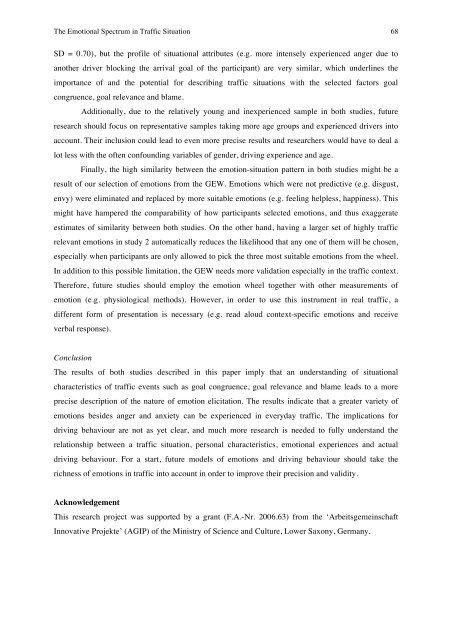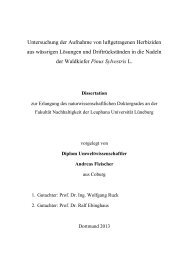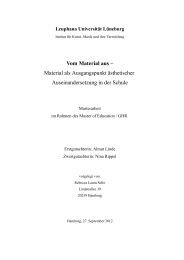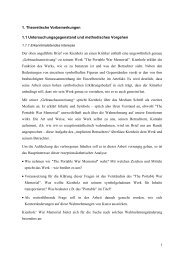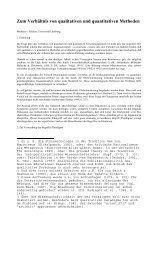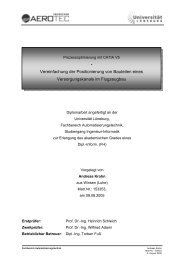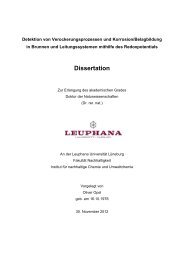Determinants of Emotional Experiences in Traffic Situations ... - OPUS
Determinants of Emotional Experiences in Traffic Situations ... - OPUS
Determinants of Emotional Experiences in Traffic Situations ... - OPUS
You also want an ePaper? Increase the reach of your titles
YUMPU automatically turns print PDFs into web optimized ePapers that Google loves.
The <strong>Emotional</strong> Spectrum <strong>in</strong> <strong>Traffic</strong> Situation 68!<br />
SD = 0.70), but the pr<strong>of</strong>ile <strong>of</strong> situational attributes (e.g. more <strong>in</strong>tensely experienced anger due to<br />
another driver block<strong>in</strong>g the arrival goal <strong>of</strong> the participant) are very similar, which underl<strong>in</strong>es the<br />
importance <strong>of</strong> and the potential for describ<strong>in</strong>g traffic situations with the selected factors goal<br />
congruence, goal relevance and blame.<br />
Additionally, due to the relatively young and <strong>in</strong>experienced sample <strong>in</strong> both studies, future<br />
research should focus on representative samples tak<strong>in</strong>g more age groups and experienced drivers <strong>in</strong>to<br />
account. Their <strong>in</strong>clusion could lead to even more precise results and researchers would have to deal a<br />
lot less with the <strong>of</strong>ten confound<strong>in</strong>g variables <strong>of</strong> gender, driv<strong>in</strong>g experience and age.<br />
F<strong>in</strong>ally, the high similarity between the emotion-situation pattern <strong>in</strong> both studies might be a<br />
result <strong>of</strong> our selection <strong>of</strong> emotions from the GEW. Emotions which were not predictive (e.g. disgust,<br />
envy) were elim<strong>in</strong>ated and replaced by more suitable emotions (e.g. feel<strong>in</strong>g helpless, happ<strong>in</strong>ess). This<br />
might have hampered the comparability <strong>of</strong> how participants selected emotions, and thus exaggerate<br />
estimates <strong>of</strong> similarity between both studies. On the other hand, hav<strong>in</strong>g a larger set <strong>of</strong> highly traffic<br />
relevant emotions <strong>in</strong> study 2 automatically reduces the likelihood that any one <strong>of</strong> them will be chosen,<br />
especially when participants are only allowed to pick the three most suitable emotions from the wheel.<br />
In addition to this possible limitation, the GEW needs more validation especially <strong>in</strong> the traffic context.<br />
Therefore, future studies should employ the emotion wheel together with other measurements <strong>of</strong><br />
emotion (e.g. physiological methods). However, <strong>in</strong> order to use this <strong>in</strong>strument <strong>in</strong> real traffic, a<br />
different form <strong>of</strong> presentation is necessary (e.g. read aloud context-specific emotions and receive<br />
verbal response).<br />
Conclusion<br />
The results <strong>of</strong> both studies described <strong>in</strong> this paper imply that an understand<strong>in</strong>g <strong>of</strong> situational<br />
characteristics <strong>of</strong> traffic events such as goal congruence, goal relevance and blame leads to a more<br />
precise description <strong>of</strong> the nature <strong>of</strong> emotion elicitation. The results <strong>in</strong>dicate that a greater variety <strong>of</strong><br />
emotions besides anger and anxiety can be experienced <strong>in</strong> everyday traffic. The implications for<br />
driv<strong>in</strong>g behaviour are not as yet clear, and much more research is needed to fully understand the<br />
relationship between a traffic situation, personal characteristics, emotional experiences and actual<br />
driv<strong>in</strong>g behaviour. For a start, future models <strong>of</strong> emotions and driv<strong>in</strong>g behaviour should take the<br />
richness <strong>of</strong> emotions <strong>in</strong> traffic <strong>in</strong>to account <strong>in</strong> order to improve their precision and validity.<br />
Acknowledgement<br />
This research project was supported by a grant (F.A.-Nr. 2006.63) from the ‘Arbeitsgeme<strong>in</strong>schaft<br />
Innovative Projekte’ (AGIP) <strong>of</strong> the M<strong>in</strong>istry <strong>of</strong> Science and Culture, Lower Saxony, Germany.


